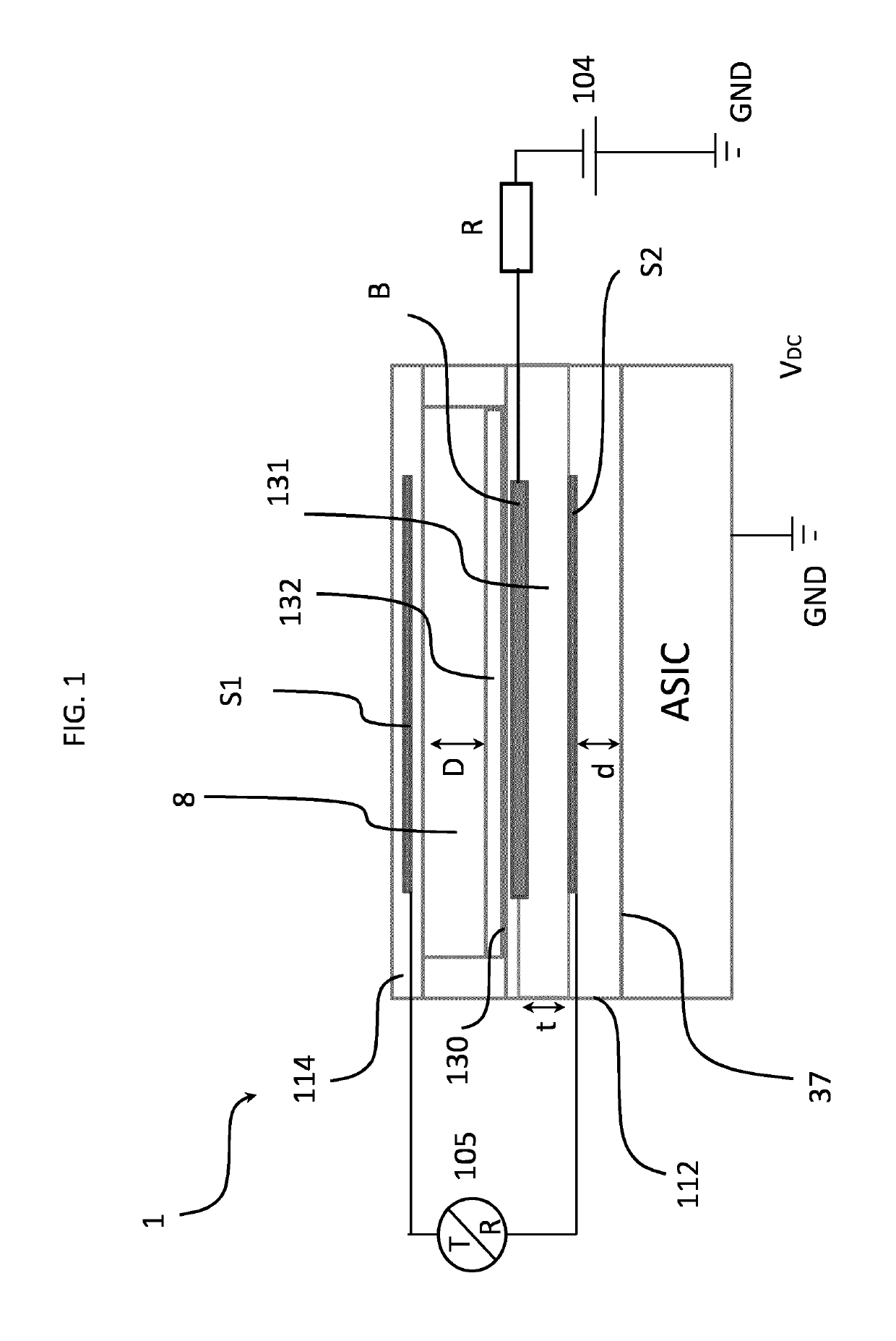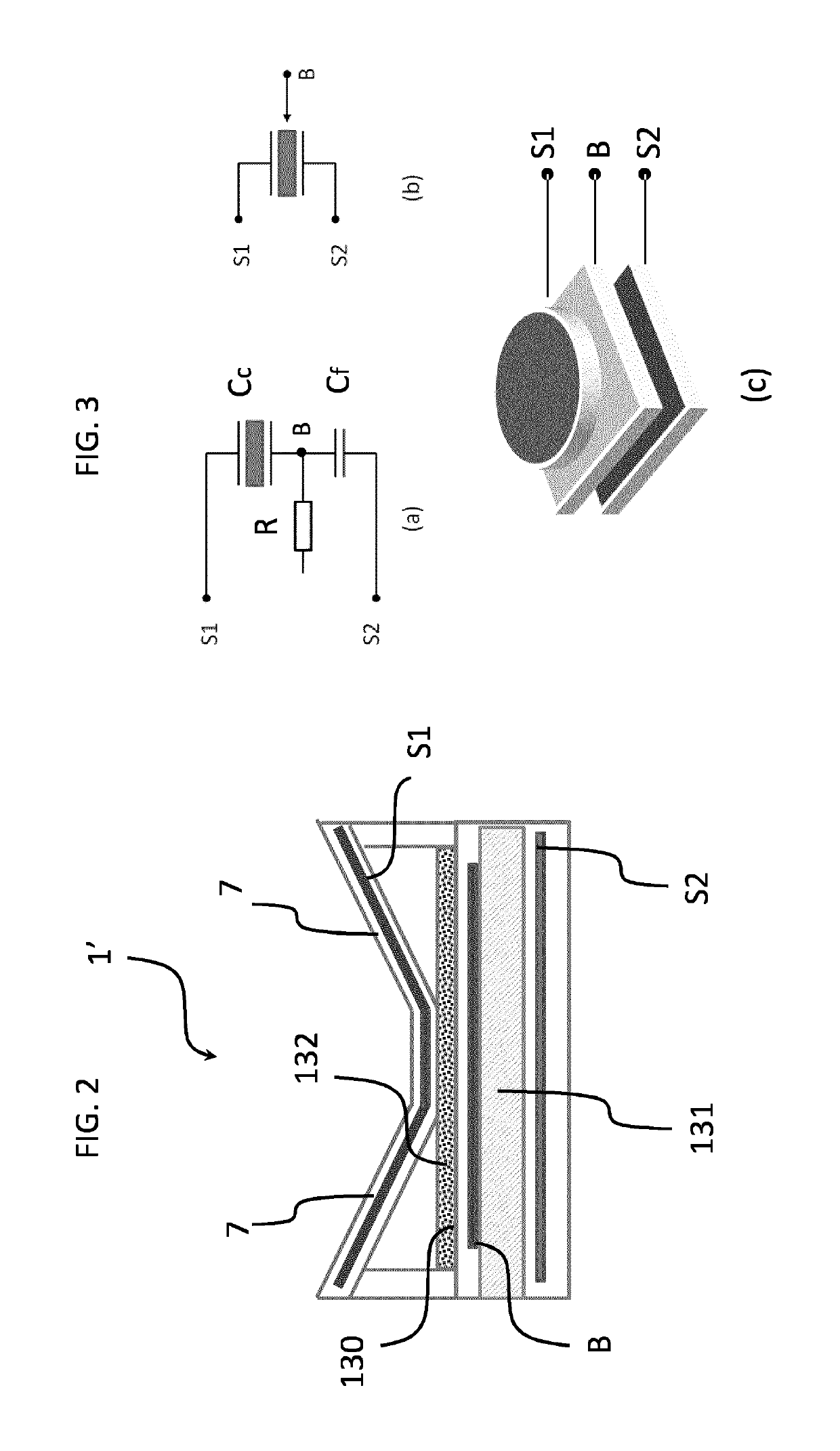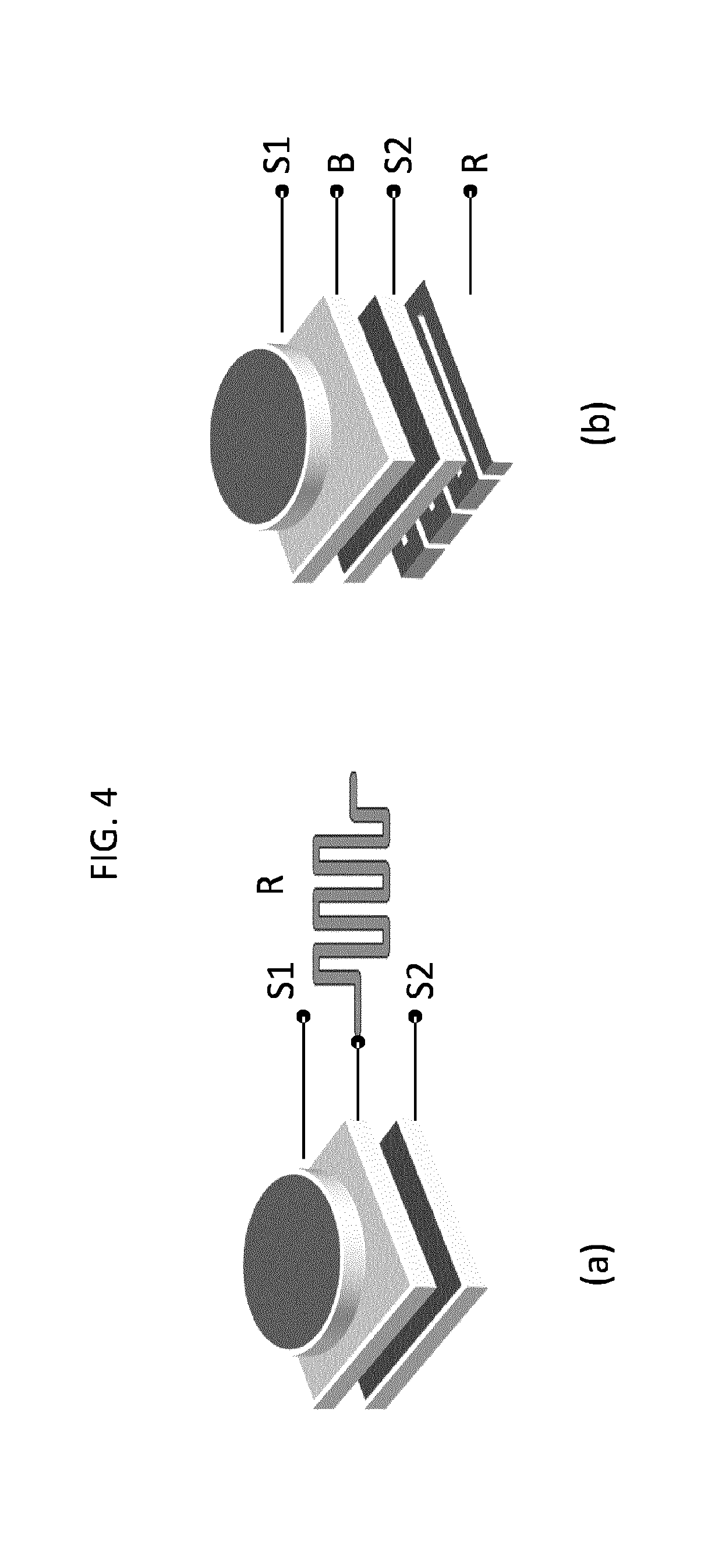Monolithically integrated three electrode CMUT device
a three-electrode cmut, monolithic technology, applied in mechanical vibration separation, medical science, diagnostics, etc., can solve the problem of limiting the performance of the array, and achieve the effect of improving and efficient high-voltage supply
- Summary
- Abstract
- Description
- Claims
- Application Information
AI Technical Summary
Benefits of technology
Problems solved by technology
Method used
Image
Examples
Embodiment Construction
[0036]In an implementation of the present invention the elements of an ultrasound transducer array 10′ (FIG. 8) comprise CMUT cells. FIG. 1 shows an embodiment of a CMUT cell 1 according to the invention. A flexible membrane or diaphragm 114 is suspended above (or oppossing) a substrate 112 with a gap 8 there between. The substrate can be made of either silicon or another CMOS compatible material such as glass. A first electrode S1 is coupled to the cell membrane 114 and can move with the membrane 114. In the embodiment shown in FIG. 1 a third electrode B is embedded into the floor 130 of the cell comprising an upper surface of the substrate 112. Other realizations of the electrode S1 design can be considered, such as electrode S1 may be embedded in the membrane 114 or it may be deposited on the membrane 114 as an additional layer. In this example, the bottom electrode B is circularly configured and embedded into the cell floor 130. In addition, the membrane layer 114 is fixed relat...
PUM
 Login to View More
Login to View More Abstract
Description
Claims
Application Information
 Login to View More
Login to View More - R&D
- Intellectual Property
- Life Sciences
- Materials
- Tech Scout
- Unparalleled Data Quality
- Higher Quality Content
- 60% Fewer Hallucinations
Browse by: Latest US Patents, China's latest patents, Technical Efficacy Thesaurus, Application Domain, Technology Topic, Popular Technical Reports.
© 2025 PatSnap. All rights reserved.Legal|Privacy policy|Modern Slavery Act Transparency Statement|Sitemap|About US| Contact US: help@patsnap.com



